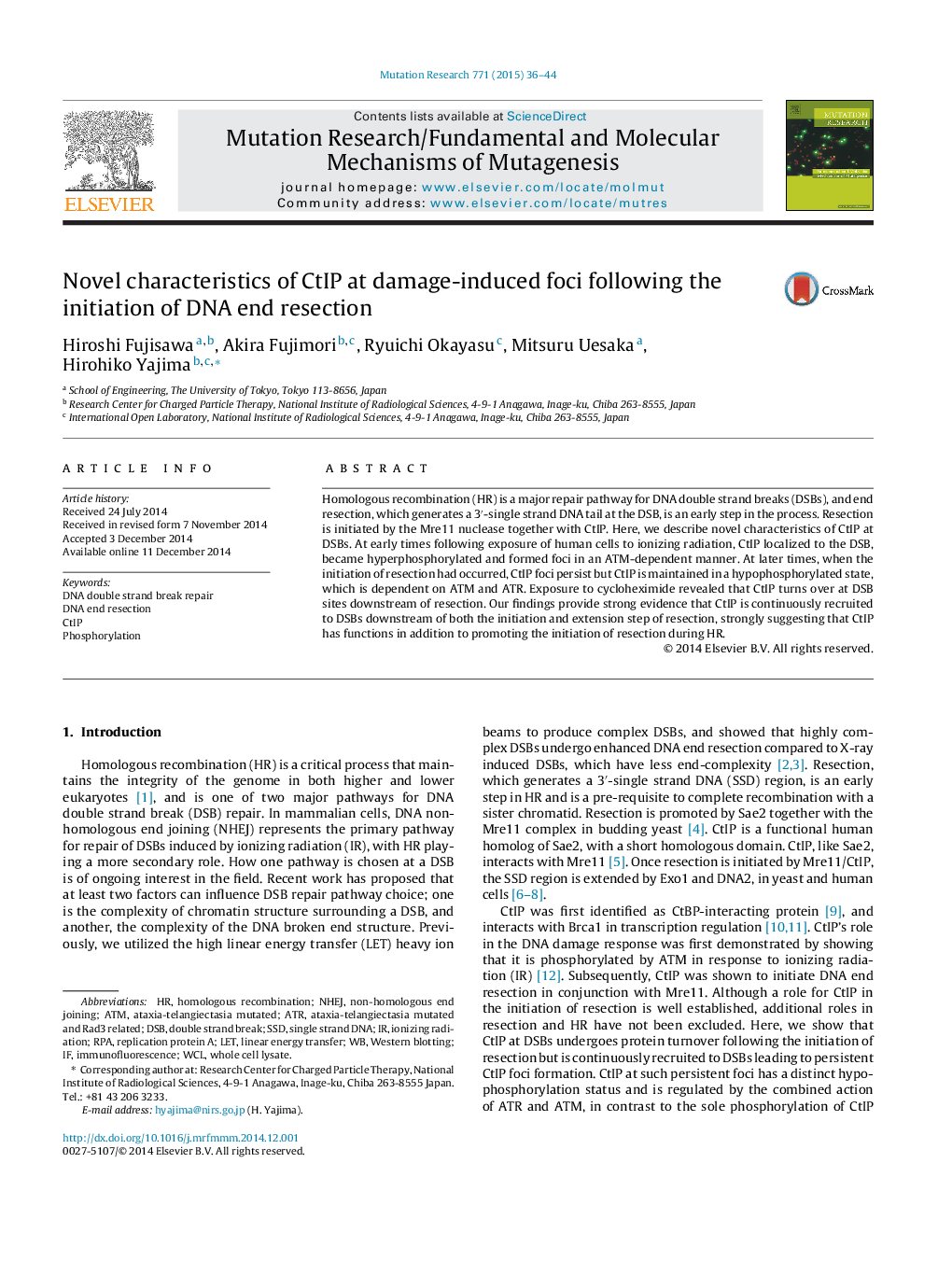| کد مقاله | کد نشریه | سال انتشار | مقاله انگلیسی | نسخه تمام متن |
|---|---|---|---|---|
| 2146203 | 1548328 | 2015 | 9 صفحه PDF | دانلود رایگان |

• CtIP becomes hyperphosphorylated and forms foci following cell irradiation.
• CtIP accumulates in foci subsequent to the peak of hyperphosphorylation.
• CtIP is maintained in a hypophosphorylated state at later times.
• CtIP is continuously recruited to DNA double strand breaks downstream of resection.
• CtIP presumably have a distinct role following the initiation of resection.
Homologous recombination (HR) is a major repair pathway for DNA double strand breaks (DSBs), and end resection, which generates a 3′-single strand DNA tail at the DSB, is an early step in the process. Resection is initiated by the Mre11 nuclease together with CtIP. Here, we describe novel characteristics of CtIP at DSBs. At early times following exposure of human cells to ionizing radiation, CtIP localized to the DSB, became hyperphosphorylated and formed foci in an ATM-dependent manner. At later times, when the initiation of resection had occurred, CtIP foci persist but CtIP is maintained in a hypophosphorylated state, which is dependent on ATM and ATR. Exposure to cycloheximide revealed that CtIP turns over at DSB sites downstream of resection. Our findings provide strong evidence that CtIP is continuously recruited to DSBs downstream of both the initiation and extension step of resection, strongly suggesting that CtIP has functions in addition to promoting the initiation of resection during HR.
Journal: Mutation Research/Fundamental and Molecular Mechanisms of Mutagenesis - Volume 771, January 2015, Pages 36–44